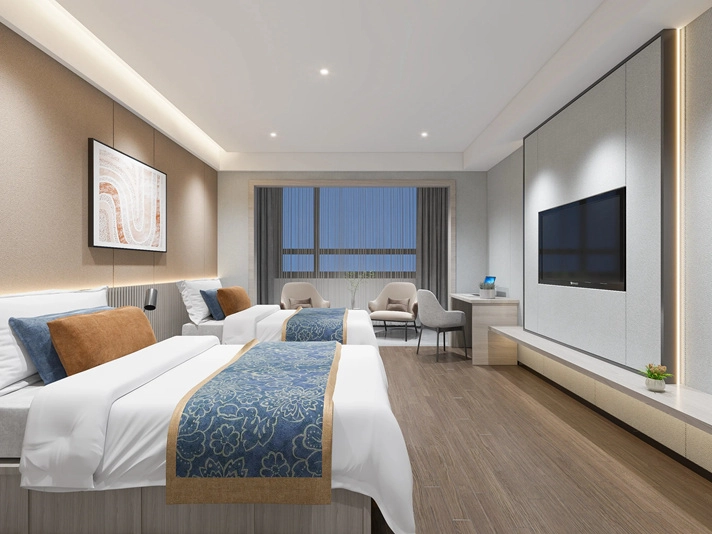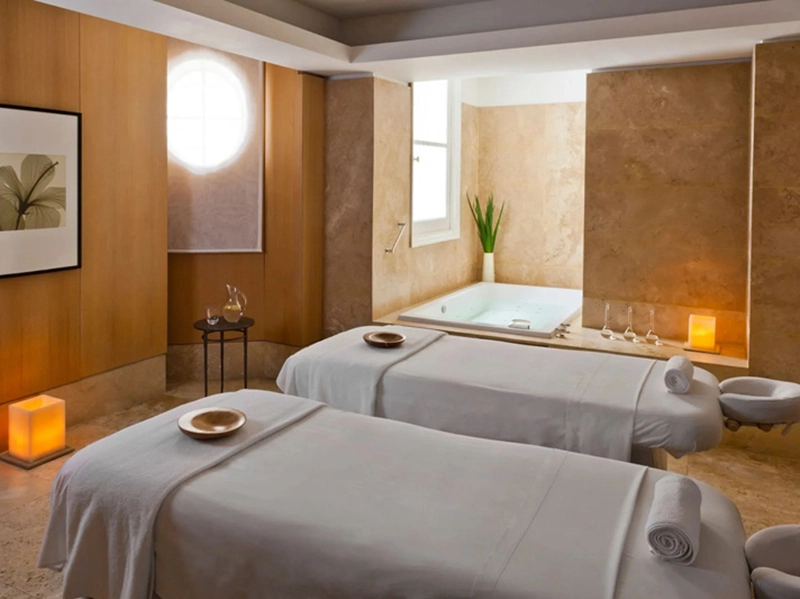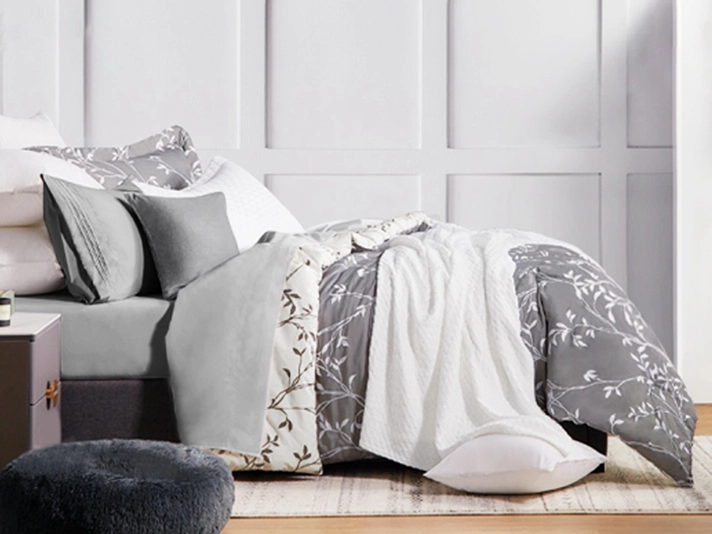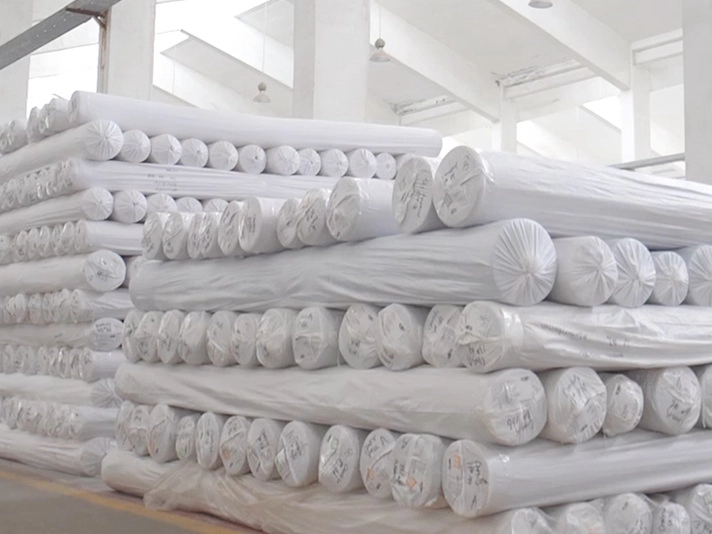Soft Polycotton Fitted Sheets - Deep Fit & Durable Comfort
The Strategic Imperative of Polycotton Fitted Sheets in Commercial and Healthcare Environments
In high-demand commercial and healthcare settings, the selection of linens transcends mere aesthetics, becoming a critical operational decision impacting hygiene, durability, and cost-efficiency. Among the diverse material options, polycotton fitted sheets have emerged as a preferred solution, striking an optimal balance between the natural comfort and breathability of cotton and the synthetic strength and resilience of polyester. This blend delivers superior performance under rigorous conditions, including frequent commercial laundering and continuous use. The market for these specialized textiles is experiencing robust growth, driven by an escalating demand from sectors prioritizing both longevity and user comfort, alongside stringent hygiene protocols. Industry trends indicate a sustained shift towards materials that offer exceptional durability, wrinkle resistance, and colorfastness without compromising on a soft, inviting feel. This extends beyond general hospitality to include specialized applications such as `poly cotton deep fitted sheets` for thicker mattresses and resilient options suitable for environments demanding the highest standards of sanitation and wear resistance. As material science advances, we anticipate further innovations in polycotton blends, enhancing their functional properties and expanding their application across various commercial landscapes, from luxury resorts to high-volume healthcare facilities.
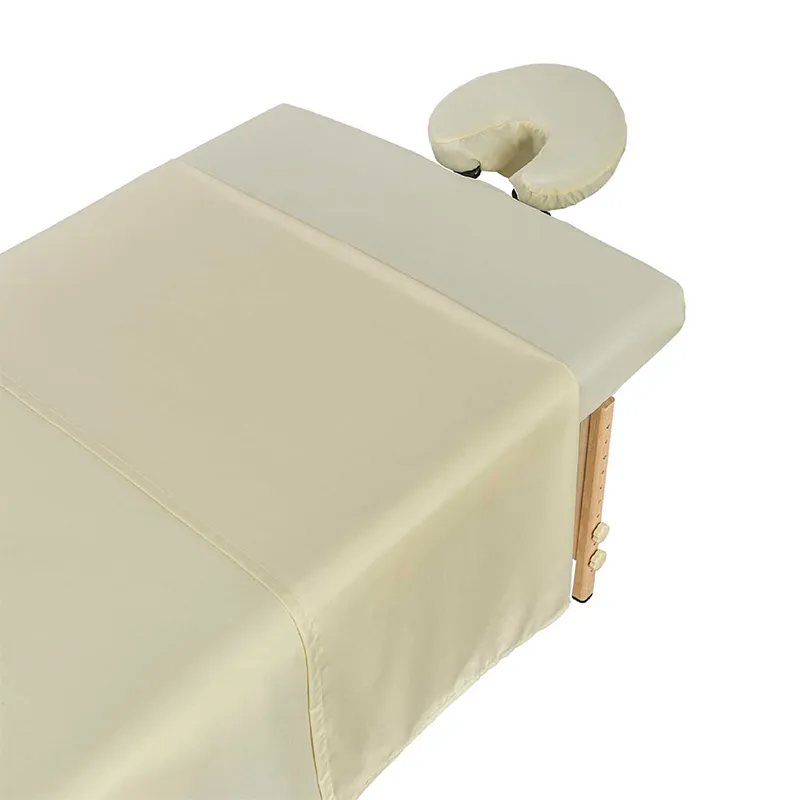
The blend ratio is a critical determinant of a polycotton sheet's characteristics, typically ranging from 50/50 to 60/40 cotton-to-polyester. A higher cotton content generally enhances softness and breathability, while a greater polyester proportion improves wrinkle resistance, durability, and quick-drying properties. This adaptability in blend ratios allows manufacturers to tailor `cotton polyester fitted sheets` precisely to the demands of specific environments, ensuring optimal performance for different operational needs. The growth trajectory is further propelled by an increasing awareness among procurement specialists regarding the total cost of ownership, where the extended lifespan and reduced maintenance requirements of polycotton significantly outweigh the initial investment. This strategic shift is particularly evident in large-scale operations where efficiency and cost-effectiveness are paramount. Moreover, the environmental footprint of textile production and care is gaining prominence, leading to innovations that reduce water and energy consumption during laundering cycles, an area where polycotton's quick-drying nature offers a distinct advantage.
Manufacturing Excellence: The Crafting of Polycotton Fitted Sheets
The production of high-quality polycotton fitted sheets involves a sophisticated multi-stage manufacturing process, meticulously designed to ensure product integrity, performance, and longevity. It begins with the precise blending of raw cotton fibers and polyester filaments, which are then spun into a composite yarn. This yarn combines the inherent strengths of both materials: cotton's natural absorbency and softness, and polyester's resilience, strength, and resistance to shrinking and wrinkling. Following yarn production, the material undergoes weaving, predominantly using plain, sateen, or twill weaves, each contributing distinct textural and durability characteristics. Plain weave offers robustness and simplicity, sateen provides a lustrous finish and smooth feel, while twill offers a diagonal ribbed pattern known for its strength and drape. The fabric then proceeds to dyeing, where advanced reactive or disperse dyes are employed to ensure superior colorfastness, vital for maintaining aesthetic appeal after countless washes. Subsequent finishing treatments are critical, including mercerization for cotton to enhance strength and dye uptake, heat setting for polyester to stabilize dimensions and prevent shrinkage, and often, specialized treatments for wrinkle resistance, anti-pilling, and antimicrobial properties, particularly crucial for `hospital fitted sheets`.
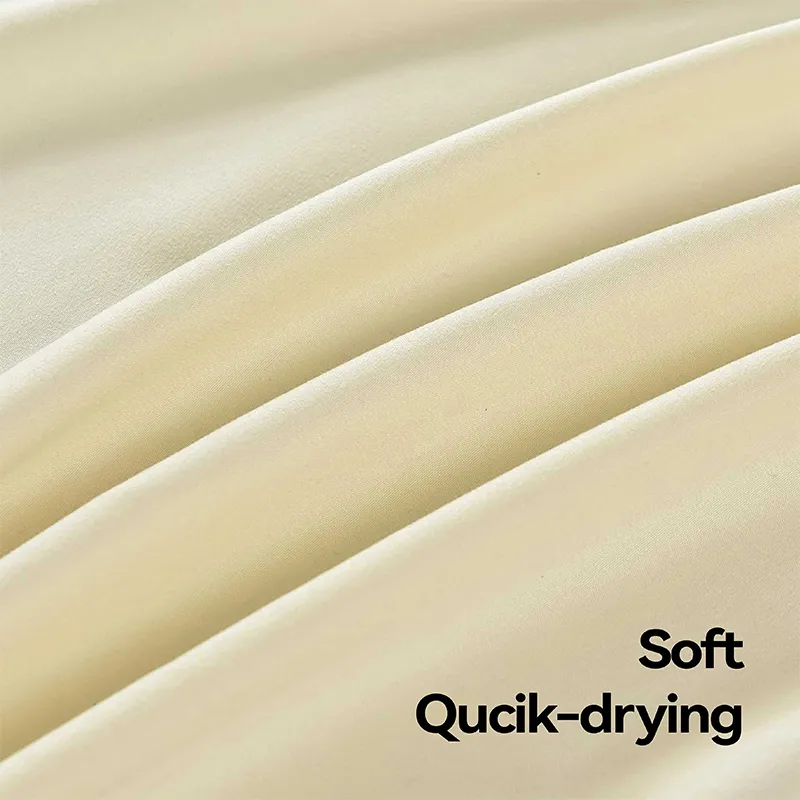
Throughout the manufacturing lifecycle, stringent quality control measures are integrated to adhere to international standards such as ISO 9001 for quality management systems and specific textile testing protocols like those set by ASTM and AATCC. These include checks for fabric weight (GSM - grams per square meter), thread count (TC), tensile strength, tear resistance, dimensional stability (shrinkage), colorfastness to washing and light, and pilling resistance. For specialized applications like `hospital bed fitted sheets`, additional tests for flammability resistance and barrier properties might be mandated. The careful selection of blend ratios—such as a common 60% cotton / 40% polyester—optimizes the balance between comfort and durability. The ultimate goal is to produce a sheet that not only feels luxurious to the touch but also withstands the rigors of commercial use, offers an extended service life, and reduces replacement costs for institutions across hospitality, healthcare, and spa industries. This holistic approach ensures that each batch of polycotton fitted sheets consistently meets the highest benchmarks for performance and reliability.
Technical Specifications and Performance Metrics of Polycotton Fitted Sheets
Understanding the technical specifications of polycotton fitted sheets is crucial for procurement specialists in B2B sectors. Key parameters include the blend ratio (e.g., 50/50, 60/40 cotton-polyester), which directly influences the fabric's tactile feel and functional attributes. Thread count (TC), though often associated with 100% cotton, also applies to polycotton and indicates the density of threads woven into a square inch of fabric; for commercial polycotton, a TC of 180-250 is typically considered robust and comfortable. Grams per Square Meter (GSM) measures the fabric's weight, correlating with durability and perceived quality; a higher GSM, often in the range of 120-150 for polycotton, indicates a denser, more resilient material. Dimensional stability, tested via multiple wash cycles, confirms minimal shrinkage (ideally less than 3%) ensuring the sheet maintains its size and fit, especially important for `poly cotton deep fitted sheets`. Colorfastness ratings determine how well the dye holds up against washing, light, and friction, a critical factor for maintaining a professional appearance over time.

The performance advantages of polycotton fitted sheets over alternatives like pure cotton or `microfiber fitted sheet` are multi-faceted. Polycotton boasts superior tensile strength and tear resistance, making it ideal for the rigorous demands of commercial laundries and high-turnover environments. Its inherent wrinkle resistance significantly reduces the need for ironing, leading to labor and energy savings. While a `microfiber fitted sheet` excels in softness and moisture-wicking, polycotton offers a more balanced breathability, preventing overheating while still being quick-drying. For `hospital bed fitted sheets`, polycotton provides a critical blend of comfort for patients, durability for frequent disinfection cycles, and ease of maintenance for staff. The cost-effectiveness of polycotton, derived from its extended lifespan and reduced care requirements, presents a compelling economic argument for its adoption in large-scale operations. For instance, studies on commercial laundry operations demonstrate that polycotton linens can withstand 200-300 wash cycles before significant degradation, outperforming pure cotton in terms of durability and dimensional stability in such demanding environments, leading to an average 25% reduction in linen replacement costs annually for institutions transitioning from 100% cotton.
Comparison of Fitted Sheet Materials
| Feature | Polycotton (e.g., 60/40) | 100% Cotton | Microfiber (100% Polyester) |
|---|---|---|---|
| Durability / Lifespan | Excellent (High tensile strength, resists tearing, maintains integrity after 200-300 washes) | Good (Softer, but prone to shrinking/wrinkling; ~150-200 washes) | Very Good (Highly durable, resists wrinkles and pilling; >300 washes) |
| Wrinkle Resistance | Excellent (Requires minimal ironing) | Low (Prone to wrinkling) | Excellent (Naturally wrinkle-resistant) |
| Breathability | Good (Cotton component allows airflow) | Excellent (Natural fibers breathe well) | Moderate (Can trap heat if not woven loosely) |
| Softness | Very Good (Soft feel, improves with washes) | Excellent (Natural softness) | Excellent (Smooth, silky feel) |
| Drying Time | Fast (Polyester component aids quick drying) | Slow (Absorbs and retains water) | Very Fast (Synthetic fibers repel water) |
| Cost-Effectiveness | High (Long lifespan, low maintenance) | Moderate (Higher initial cost, more care) | Very High (Lower initial cost, durable) |
| Pilling Resistance | Good (Polyester resists pilling better than cotton) | Moderate (Can pill over time) | Excellent (Generally very resistant) |
Strategic Applications of Polycotton Fitted Sheets Across Industries
The versatility and robust performance characteristics of polycotton fitted sheets make them indispensable across a spectrum of professional environments. In the healthcare sector, including hospitals, clinics, and long-term care facilities, `hospital fitted sheets` are paramount for maintaining stringent hygiene standards and patient comfort. The ability of polycotton to withstand high-temperature washing and industrial-strength disinfectants ensures a sterile environment, while its inherent durability reduces the frequency of replacement, aligning with budgetary constraints. For institutions utilizing specialized equipment, `hospital bed fitted sheets` crafted from polycotton blends can accommodate adjustable beds and provide resilience against constant friction. Beyond direct patient care, their wrinkle-resistant nature contributes to a consistently neat and professional appearance, vital for patient morale and institutional reputation. Similarly, in the hospitality industry, from high-volume hotels to boutique resorts, polycotton offers a cost-effective solution for delivering consistent comfort and an impeccable guest experience. Their quick-drying properties expedite laundry turnaround times, enhancing operational efficiency and reducing energy consumption in commercial laundries.
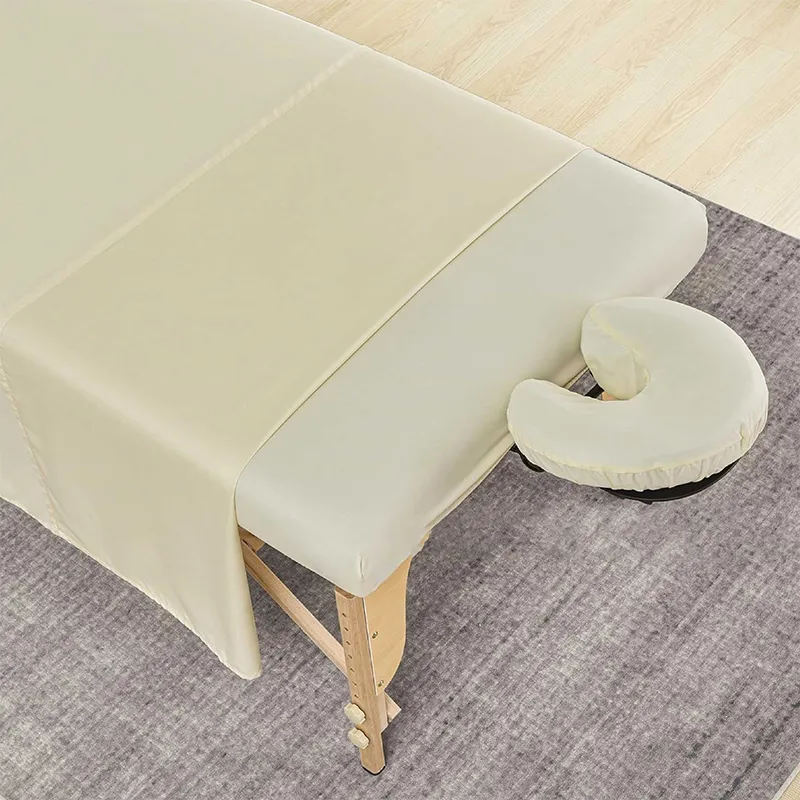
The wellness and spa industry also significantly benefits from the advantages of polycotton fitted sheets. Massage parlors, physiotherapy clinics, and day spas require linens that are not only soft and comfortable for clients but also capable of enduring frequent cleaning protocols and exposure to oils and lotions. Polycotton's resistance to staining and ease of laundering make it an ideal choice, preventing material degradation and maintaining a fresh appearance. For applications requiring specific dimensions or extra depth, `poly cotton deep fitted sheets` are available, ensuring a snug fit on various mattress types, including those with toppers or specialized therapeutic overlays. A notable case involves a large hotel chain that transitioned their entire inventory to a 65/35 polycotton blend, reporting a 30% increase in sheet lifespan and a 15% reduction in annual laundry costs due to faster drying times and decreased need for pressing. This strategic adoption underscores polycotton's role as a high-performance material that directly translates into tangible operational benefits and enhanced customer satisfaction across demanding commercial landscapes.
Customization Solutions and Manufacturer Selection in Polycotton Linens
For businesses seeking tailored textile solutions, the ability to customize polycotton fitted sheets is a key consideration. Customization options extend beyond standard sizing to include specific blend ratios (e.g., opting for a higher cotton percentage for enhanced softness in luxury accommodations or a higher polyester blend for extreme durability in industrial settings). Dyeing capabilities allow for a precise match to corporate branding or interior design schemes, ensuring visual consistency across an establishment. Specialized finishes, such as antimicrobial treatments for healthcare settings or soil-release finishes for hospitality, can be integrated during the manufacturing process to enhance functional performance. Dimensions are particularly crucial; for example, `poly cotton deep fitted sheets` are custom-fabricated to accommodate mattresses up to 20 inches deep, providing a secure fit that prevents slippage during use, a common concern in high-movement environments like hospitals or busy hotels. This level of bespoke manufacturing ensures that the linens perfectly align with the unique operational and aesthetic requirements of each client.

Selecting the right manufacturer for polycotton fitted sheets is paramount for ensuring quality, consistency, and a reliable supply chain. Key factors to evaluate include the manufacturer's adherence to international quality standards such as ISO 9001 and environmental certifications like OEKO-TEX Standard 100, which guarantees textiles are free from harmful substances. A manufacturer's service history and portfolio of reputable clients can attest to their experience and capability in handling large-volume B2B orders. Transparency in their supply chain and commitment to ethical sourcing practices are increasingly important considerations for corporate social responsibility. Furthermore, assessing their technical support, minimum order quantities (MOQs), production lead times, and after-sales service is crucial for long-term partnership viability. A manufacturer with in-house quality assurance labs, capable of conducting rigorous tests on tensile strength, colorfastness, and shrinkage, demonstrates a commitment to product excellence. For institutions requiring specialized products like `hospital fitted sheets` or `hospital bed fitted sheets`, verifying the manufacturer's expertise in healthcare-grade textiles and compliance with relevant industry regulations (e.g., flammability standards) is non-negotiable. Partnering with a proven expert ensures that the investment in linens translates into maximum operational efficiency and enhanced user satisfaction.
Ensuring Trust and Authority: Quality Assurance and Support for Polycotton Linens
In the B2B sector, establishing trust and authority is fundamental, particularly when dealing with mission-critical products like polycotton fitted sheets. Reputable manufacturers demonstrate their authority through adherence to rigorous quality assurance protocols and industry certifications. For instance, an ISO 9001 certified manufacturer ensures a robust quality management system, guaranteeing consistency in product output and operational efficiency. Compliance with OEKO-TEX Standard 100 provides assurance that the textiles are free from harmful substances, a critical consideration for `hospital fitted sheets` and those used in sensitive environments. Furthermore, transparent testing data for parameters such as durability (e.g., tested wash cycles before noticeable wear), dimensional stability (minimal shrinkage rates), and colorfastness, empowers procurement teams to make informed decisions based on empirical evidence. This commitment to measurable quality provides peace of mind regarding the long-term performance and safety of the linen investment, significantly reducing the risks associated with premature wear or adverse reactions.
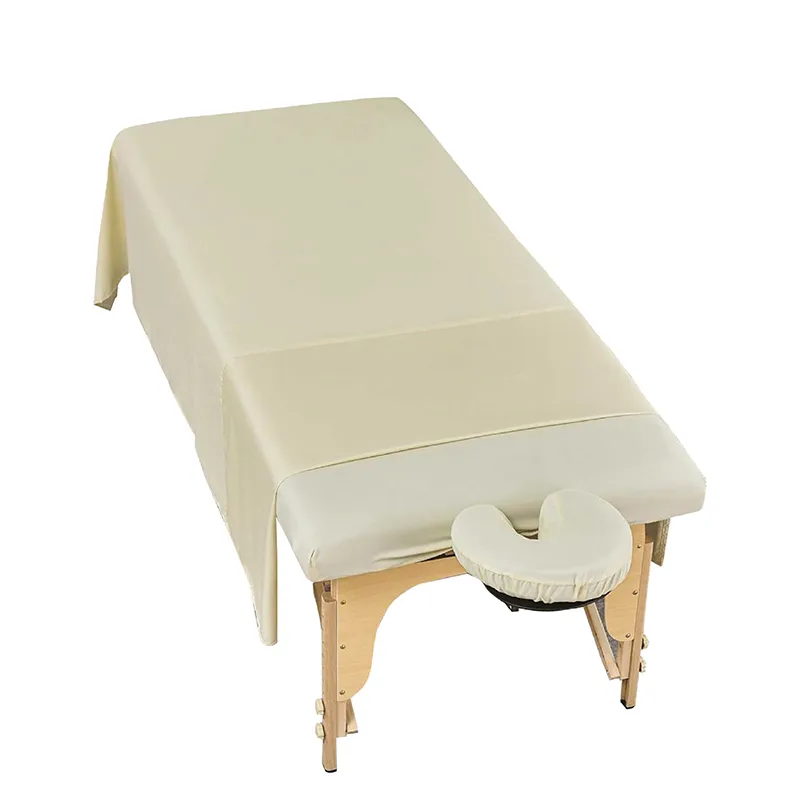
Building trustworthiness extends beyond product quality to encompass comprehensive customer support and clear operational guidelines. A dedicated FAQ section can address common inquiries regarding the care, maintenance, and expected lifespan of polycotton fitted sheets, thereby reducing post-purchase support needs. For instance, queries about washing temperatures, suitable detergents for preserving fabric integrity, or whether specific stain treatments can be used on `cotton polyester fitted sheets` are typical and can be pre-empted. Clear delivery cycle information, outlining lead times for production and shipment, is vital for seamless inventory management in high-volume operations. Furthermore, a robust warranty policy, typically covering manufacturing defects for a specified period or number of washes, provides a layer of protection for the investment. Responsive customer support, accessible through multiple channels, is indispensable for addressing unforeseen issues or facilitating reorders, particularly for critical items like `hospital bed fitted sheets` where supply continuity is paramount. This holistic approach to quality and support solidifies a manufacturer's reputation as a reliable and authoritative partner in the textile supply chain, fostering long-term collaborative relationships.
Frequently Asked Questions (FAQ)
Q1: What is the optimal blend ratio for commercial polycotton fitted sheets?
A1: While ratios vary, a 60% cotton / 40% polyester blend often provides an excellent balance of softness, breathability, and durability for commercial use, offering superior wrinkle and shrink resistance compared to higher cotton blends, while maintaining comfort over 100% polyester.
Q2: How do polycotton fitted sheets contribute to cost savings in commercial laundries?
A2: The polyester component in polycotton blends makes them inherently more wrinkle-resistant and quicker to dry than 100% cotton, leading to significant reductions in ironing labor, energy consumption for drying, and faster turnaround times. Their extended lifespan also reduces replacement frequency.
Q3: Are these sheets suitable for medical environments like `hospital bed fitted sheets`?
A3: Absolutely. Polycotton's durability, ability to withstand frequent high-temperature washes and industrial disinfectants, and resistance to shrinking and pilling make it highly suitable for healthcare settings. Many manufacturers also offer specific anti-microbial or fluid-resistant finishes for hospital-grade linens.
Q4: What is the typical lead time for custom `poly cotton deep fitted sheets` orders?
A4: Lead times can vary based on order volume, customization complexity, and manufacturer's production schedule, but generally range from 4-8 weeks for bulk custom orders. It's always advisable to consult directly with the manufacturer for precise estimates.
Conclusion: The Enduring Value of Polycotton Fitted Sheets
The strategic adoption of polycotton fitted sheets represents a sound investment for any commercial entity prioritizing durability, cost-efficiency, and user satisfaction. Their unique blend of natural and synthetic fibers creates a textile that is not only comfortable and aesthetically pleasing but also exceptionally resilient against the rigorous demands of institutional use and frequent laundering. From hotels and spas requiring a luxurious yet practical solution to hospitals and care facilities demanding stringent hygiene and unwavering longevity, polycotton stands out as a superior choice. The ongoing advancements in textile technology promise even more enhanced functionalities, such as improved stain resistance, further reduced drying times, and sustainable manufacturing processes, solidifying polycotton's position as a cornerstone material in the commercial linen industry. As businesses continue to seek textiles that provide both tangible operational benefits and contribute positively to user experience, the evolution and strategic deployment of polycotton blends will remain a critical area of focus.
References
- Textile Industry Standards and Quality Control: A Comprehensive Review. Journal of Textile Engineering & Fashion Technology.
- Performance Characteristics of Cotton-Polyester Blends in Commercial Laundry Environments. International Journal of Advanced Textile Research.
- Sustainability and Efficiency in Commercial Linen Management: An Operational Analysis. Hospitality Management Review.
- Material Science Innovations in Healthcare Textiles: Focus on Durability and Hygiene. Clinical Textiles Research.
- The Impact of Fabric Composition on User Comfort and Industrial Washability for Fitted Sheets. Applied Textile Sciences Journal.
-
Garment Washed Sheets Color Retention Prevents Fading After WashesNewsNov.14, 2025
-
Charcoal Bamboo Sheets Moisture-Wicking Property Enhances Sleep ComfortNewsNov.12, 2025
-
High Quality Satin Sheets Soft Touch Improves Hotel Guest ExperienceNewsNov.12, 2025
-
Poly Cotton Sheets Breathable Weave Reduces Skin Irritation For PatientsNewsNov.12, 2025
-
Microfiber Sheet Stain Resistant Feature Eases Hotel HousekeepingNewsNov.12, 2025
-
Polyester Cotton Bedding Durable Fabric Withstands Frequent Hotel WashesNewsNov.12, 2025
-
Microfiber Pillow Filling Even Distribution Prevents LumpingNewsNov.03, 2025

